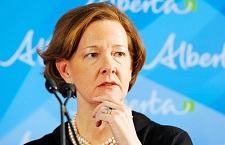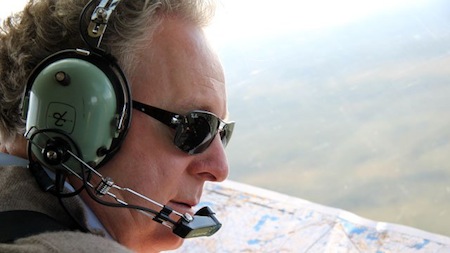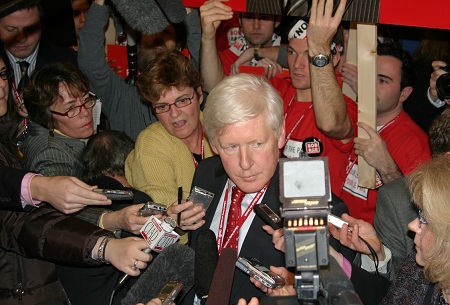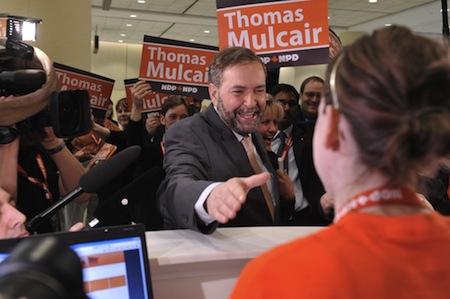

As the federal Canadian political scene solidified with the New Democratic Party’s selection of a leader last Saturday, attention this week has turned west to Alberta, where Premier Alison Redford (above, top) has called a long-awaited general election for April 23.

Alberta, Canada’s fourth-largest by population and its richest by GDP per capital, is an odd province politically — it has been governed by a conservative party for over a century, going back to 1917, when the United Farmers of Alberta entered electoral politics and swept the Liberal Party out of office. In 1935, the more radical Social Credit took power — and stayed there until 1971, largely under the premiership of Ernest Manning, who served from 1943 to 1968, governing Alberta with a strongly Christian and prairie populist political power base that had little do with the “social credit” theories from which the party’s name originated. Thereafter, the Progressive Conservatives took power, where they’ve remained ever since; under the premiership of Ralph Klein from 1992 to 2006, Alberta generally prospered with a strong economy buoyed by oil wealth as well.
Klein’s successor, Ed Stelmach, continued the streak in the 2008 elections, in which the Progressive Conservatives won 72 of the 83 seats in Alberta’s legislative assembly (the Liberals took 9 and the NDP the other 2).
But times being rough with a financial crisis, and with 41 consecutive years in power tricky for any party to navigate (let alone in a society with open elections), Stelmach’s popularity waned and Redford succeeded him last October.
With the Liberals and NDP terminally unpopular in Canada’s most reliably conservative — culturally and economically — province, it seems unbelievable that it took so long for a new conservative alternative to emerge.
That alternative — the Wildrose Party, so named for the wild roses that grow in the prairie province, burst onto the scene in 2008 and started to lead polls for the first time in 2010 (at the same time a little certain conservative movement in the United States was making trouble on the far right as well). Its popularity waned as the economy seemed to improve and as Redford emerged, but it has now gradually clawed back into an essential tie for first place under leader Danielle Smith (above, bottom). Continue reading Alberta’s Tea Party makes a run at power →
![]()
![]()








